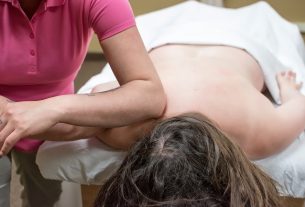Massage therapy clinics have become the haven where people stay during weekends to get that much-needed relaxation. And with much publicity from celebrities in Hollywood, it has become part of the American lifestyle.
With the onslaught of massage therapy clinics in the country, more and more people are considering a career in it. After all, the pay is not as high but people will be raking in a lot in tips for good service. In fact, people who work in these clinics make a living out of these tips. This is especially true if you are working in high-end massage therapy clinics in New York and in the Beverly Hills area.
But if you think that becoming a massage therapist is as easy as filling up an application form, it’s not. In fact, before you start kneading and massaging, you need to be first trained and certified. Because of the popularity of massage therapy clinics in the country, therapists have been regulated by the government. Unlike before when anyone can just work as a massage therapist, now the industry is more discriminating.
So if you are thinking of getting yourself a career in massage therapy, know first that it is not easy but not impossible too. Here are some of the things that you should consider when you are determined to carve a name for yourself in this fast-growing industry.
No federal regulation for the industry
Having just boomed in recent years, massage therapy is still not regulated by federal laws. Only state laws are being used in this industry right now. This means that when you go from one state to another, different laws will apply. In fact, in Canada, only three states have so far regulated the practice— Ontario, British Columbia and Newfoundland. The other provinces have yet to formulate their own regulations about the practice.
This can get confusing especially when you are looking for a career in massage therapy outside your mother state. For instance in Canada, massage therapists in the three provinces where it is regulated will carry a professional title that will distinguish them from other pseudo practitioners. Some will even have their own specialties similar to medical doctors.
These specialties are taken from the kinds of massages that they have expertise in Acupressure, Hot Stone Massage, Thai Massage, Shiatsu, Aromatherapy and a lot more. Some will, of course, have more than one specialty but each should come with a certification. They should also first have a license before they can be allowed to practice in that particular area. This is attained when they have submitted all the necessary requirements asked of them and have met the standards of the state or the province’s regulatory board.
These regulating standards often include a specific number of years in total training in any field or specialty. These training courses are not the usual massage lessons that you foresee. Often, these lessons include subjects similar to what medical doctors take: anatomy, pathology, physiology, and physical therapy. Because of these regulations, people who already have a license can actually assess and treat health conditions and injuries just like a doctor.
So before you apply, make sure that you know first the state regulations. To know about them, you can go to massage therapy associations and organizations in the state. Their websites will surely have the current regulations prevailing in the area.



